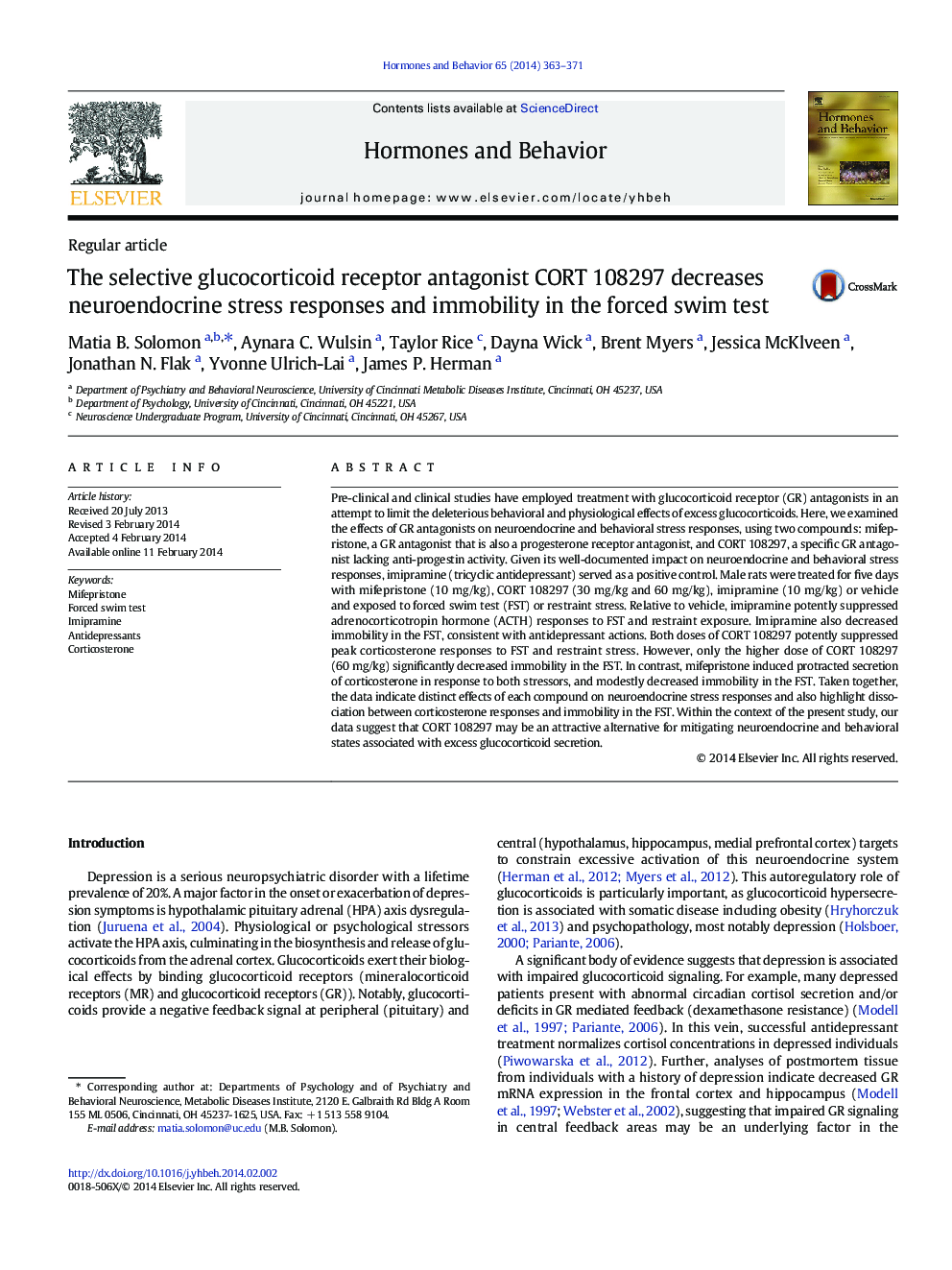| Article ID | Journal | Published Year | Pages | File Type |
|---|---|---|---|---|
| 323416 | Hormones and Behavior | 2014 | 9 Pages |
•CORT 108297 decreases neuroendocrine responses to restraint•CORT 108297 decreases neuroendocrine responses to forced swim test•CORT 108297 decreases immobility in the forced swim test
Pre-clinical and clinical studies have employed treatment with glucocorticoid receptor (GR) antagonists in an attempt to limit the deleterious behavioral and physiological effects of excess glucocorticoids. Here, we examined the effects of GR antagonists on neuroendocrine and behavioral stress responses, using two compounds: mifepristone, a GR antagonist that is also a progesterone receptor antagonist, and CORT 108297, a specific GR antagonist lacking anti-progestin activity. Given its well-documented impact on neuroendocrine and behavioral stress responses, imipramine (tricyclic antidepressant) served as a positive control. Male rats were treated for five days with mifepristone (10 mg/kg), CORT 108297 (30 mg/kg and 60 mg/kg), imipramine (10 mg/kg) or vehicle and exposed to forced swim test (FST) or restraint stress. Relative to vehicle, imipramine potently suppressed adrenocorticotropin hormone (ACTH) responses to FST and restraint exposure. Imipramine also decreased immobility in the FST, consistent with antidepressant actions. Both doses of CORT 108297 potently suppressed peak corticosterone responses to FST and restraint stress. However, only the higher dose of CORT 108297 (60 mg/kg) significantly decreased immobility in the FST. In contrast, mifepristone induced protracted secretion of corticosterone in response to both stressors, and modestly decreased immobility in the FST. Taken together, the data indicate distinct effects of each compound on neuroendocrine stress responses and also highlight dissociation between corticosterone responses and immobility in the FST. Within the context of the present study, our data suggest that CORT 108297 may be an attractive alternative for mitigating neuroendocrine and behavioral states associated with excess glucocorticoid secretion.
